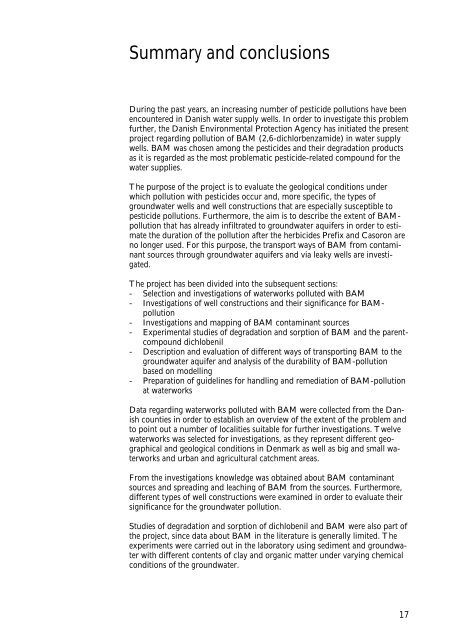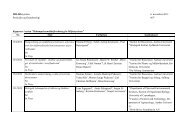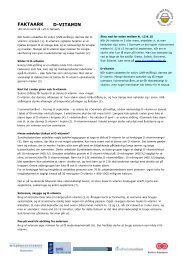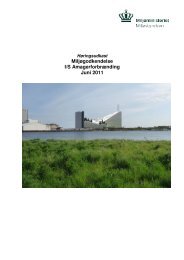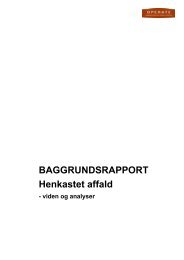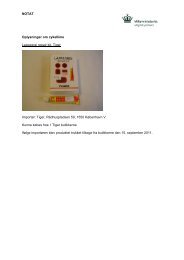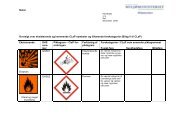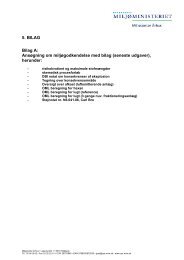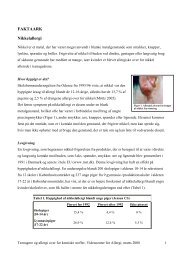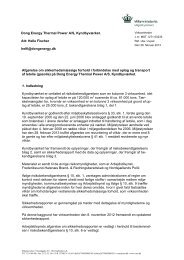Kilder til BAM-forurening - Miljøstyrelsen
Kilder til BAM-forurening - Miljøstyrelsen
Kilder til BAM-forurening - Miljøstyrelsen
You also want an ePaper? Increase the reach of your titles
YUMPU automatically turns print PDFs into web optimized ePapers that Google loves.
Summary and conclusions<br />
During the past years, an increasing number of pesticide pollutions have been<br />
encountered in Danish water supply wells. In order to investigate this problem<br />
further, the Danish Environmental Protection Agency has initiated the present<br />
project regarding pollution of <strong>BAM</strong> (2,6-dichlorbenzamide) in water supply<br />
wells. <strong>BAM</strong> was chosen among the pesticides and their degradation products<br />
as it is regarded as the most problematic pesticide-related compound for the<br />
water supplies.<br />
The purpose of the project is to evaluate the geological conditions under<br />
which pollution with pesticides occur and, more specific, the types of<br />
groundwater wells and well constructions that are especially susceptible to<br />
pesticide pollutions. Furthermore, the aim is to describe the extent of <strong>BAM</strong>pollution<br />
that has already infiltrated to groundwater aquifers in order to estimate<br />
the duration of the pollution after the herbicides Prefix and Casoron are<br />
no longer used. For this purpose, the transport ways of <strong>BAM</strong> from contaminant<br />
sources through groundwater aquifers and via leaky wells are investigated.<br />
The project has been divided into the subsequent sections:<br />
- Selection and investigations of waterworks polluted with <strong>BAM</strong><br />
- Investigations of well constructions and their significance for <strong>BAM</strong>pollution<br />
- Investigations and mapping of <strong>BAM</strong> contaminant sources<br />
- Experimental studies of degradation and sorption of <strong>BAM</strong> and the parentcompound<br />
dichlobenil<br />
- Description and evaluation of different ways of transporting <strong>BAM</strong> to the<br />
groundwater aquifer and analysis of the durability of <strong>BAM</strong>-pollution<br />
based on modelling<br />
- Preparation of guidelines for handling and remediation of <strong>BAM</strong>-pollution<br />
at waterworks<br />
Data regarding waterworks polluted with <strong>BAM</strong> were collected from the Danish<br />
counties in order to establish an overview of the extent of the problem and<br />
to point out a number of localities suitable for further investigations. Twelve<br />
waterworks was selected for investigations, as they represent different geographical<br />
and geological conditions in Denmark as well as big and small waterworks<br />
and urban and agricultural catchment areas.<br />
From the investigations knowledge was obtained about <strong>BAM</strong> contaminant<br />
sources and spreading and leaching of <strong>BAM</strong> from the sources. Furthermore,<br />
different types of well constructions were examined in order to evaluate their<br />
significance for the groundwater pollution.<br />
Studies of degradation and sorption of dichlobenil and <strong>BAM</strong> were also part of<br />
the project, since data about <strong>BAM</strong> in the literature is generally limited. The<br />
experiments were carried out in the laboratory using sediment and groundwater<br />
with different contents of clay and organic matter under varying chemical<br />
conditions of the groundwater.<br />
17


